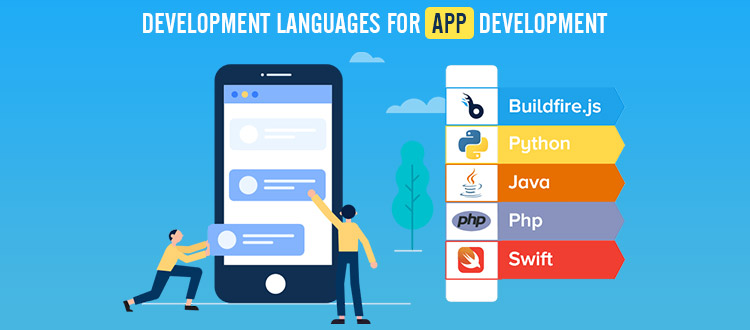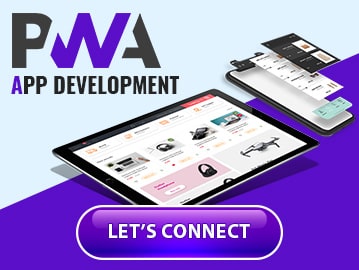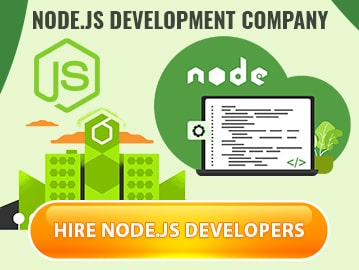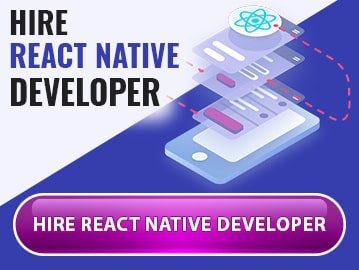Android or iOS App, Which One Would You Develop? Rock Solid Comparative Analysis Report
Written by Hemendra Singh on September 10, 2020 | Updated on: September 10, 2020

What platform should I choose to develop my first mobile App? This is a very common question that strikes everyone who is just making a debut in his app development journey. In this technologically driven society, everyone is using a smartphone. A mobile phone has become an integral part of our life. As per Statista, the Global mobile phone users are expected to surpass 7 billion by 2021. Mobile application development has emerged out as one of the major byproducts of the explosion of demand for smartphones.
Mobile App Development plays a critical role in creating brand affinity for various business units. Now, when we talk about Mobile App Development, there are mainly two major platforms dominating the market, i.e. Android and iOS. They both are good in their own sense and it’s tricky to choose only one. But first, let make it clear from that start that this is not a fight rather a detailed comparative analysis of both the platforms.
You can also build your App for both the platforms, but then if you are a newbie you must take into account the fact that your existing budget will get stretched and your overall cost of the project will multiply substantially. But the first step should always be the understanding of the difference between Android and iOS. In this article, we will try to understand the difference between both the platforms by drawing a detailed comparative analysis report.
As there are more than 5 billion mobile users across the globe, you cannot ignore the utmost importance of having a Mobile Application for your business. If you still don’t have an App for your business, maybe now it is high time you must develop one. But again while taking this critical decision, you first need to choose between Android and iOS. This post will form a comparative analysis of both these technologies and so that your business can realize and assess the potential benefits if offers.
Various factors should be taken into consideration but the three biggest ones to consider are the competencies associated with each platform, the app development process, and the target audience for your app. Let us discuss these factors along with all other factors in detail by forming a structured comparative analysis and giving a suitable example(s). So here we go!
Table of Contents
7 Major Factors That Need to Be Considered Before Choosing the App Development Platform
- Market Share
- Programming languages
- Development Costs
- Development Tools
- App Store Acceptance
- Design Principles
- Monetization Strategies
Market Share
Source: https://www.fyresite.com
As per the reports, in 2019, Android had 87% of the Global Market share whereas iOS has 13% of the global market share. However, the gap looks pretty big, the same close a bit depending upon the region or country. For example, in India, Android has a whopping 92% market share whereas, in the GA, iOS took the lead with 59% of the total market share. The whole scenario depends upon the audience to the audience. Further demographics play a critical role when there is a situation like you are launching your app in a place like India where Android is the undisputed champion.
Demographics
Demographic data helps in formulating detailed comparative analysis for your app. Depending upon the choice and preference of the operating system among the audience, you should build the App on that OS. Let us try to break down the demographic data based on the statistics from asonalex and PR Newswire.
Android Demographics
- Popular among age group between 18 to 34
- 10% are males
- 12% are identified as Introvert
- The average Salary is around $37K
- 24% are more likely to make between $50K and $100K per year
- Spending average on Technology around $50 per month
- 29% tend to make savings
IOS Demographics
- 18% are more likely to be females
- 29% are over the age of 35
- 14% are identified as extroverts
- 37-38% have a graduation degree
- 26% more likely to spend money
- The average salary is around $53K and 67% make more than $200K/year
- Spending on technology is about $100 per month
These trends depict the whole complete picture of the choice preference of the user. One of the most critical differences is that the spending capacity of iOS users is more as compared to Android users. This factor is very important while choosing the app-building platform.
The second most important trend is user behavior. The apple users slipped slightly toward the extroverted side of the spectrum. These statistics show a loyal apple cult among the users and especially here the thing which matters most is the word of mouth. Although these should be more data to confirm this claim.
In short, these statistics or data only represent a few basic trends. Therefore, you should put special emphasis on your own individual research. This data should never replace your own research. Hence, research your target audience by collecting as much data as you can. Make use of your own demographic data for predicting which OS your audience prefers.
At last from the above discussion, it is quite evident that iOS customers are very loyal to the brand while there is affordability among the android devices. On the other hand, the number of Android users are far more than iOS users. But even if iOS users are less than Android, the income level is higher for iOS users. And when the income level is higher, spending automatically becomes higher. Exceptions are always there!
Crux – While the market share of Android is way more than iOS BUT customer base of Apple and Apple products is way more than Android users. Also, their paying capacity is more than android.
Programming Languages/Development Languages
The second most important factor affecting your decision is the programming language that will help you to build your application. Separate programming languages are used in iOS and Android platforms. When we talk about android, the most common language used is Java. Apart from Java, another language that becomes popular among programmers, is C++. Initially, there were some bugs in the system but eventually later on improvements were being made to give more native experience for the users.
Mobile App Development Tools
Hardware: First of all, lets us discuss the hardware for both the platforms. For iOS App Development, you need to have a Mac or any Apple oriented Hardware. It is not possible to develop an iOS App on different Hardware like Windows or Linux etc. On the other hand, developing an Android app is possible on multiple hardware. You can start with any hardware like Mac, Windows, and Linux. The operating system is not a matter of concern for developing an Android App, unlike iOS.
IDE: Initially, the IDE used for the Android Development was Eclipse. The developers used to develop Android Apps on Eclipse which was not at all the best IDE as it had many flaws and limitations. Later on, Google introduced Android studio and all the developers shifted towards it. It was advanced and certainly better than the previous IDE. On the other hand, for iOS Apps, you have to use Xcode which is an awesome IDE to transform the overall Apple Development Experience. Hence as per the choice of programming language, you have to get used to the tool to help you build your App. You can check here the mobile app development platform market analysis 2020.
Crux – Firstly, to build an iOS app you need to have an Apple Device whereas any device/ OS can be used to build an Android Application. Secondly, Android Studio by Google is used for Android Development, whereas Xcode is used for iOS App Development.
Also Read: 10 Major Challenges for iPhone App Development in 2020
Mobile App Development Costs
The best part of mobile app development is that you can start form free. There is no such difference between Android and Apple when it comes to pricing. The reason behind this is that both Apple and Android provide free tools and documentations to develop an App. With the help of both these platforms, you can smoothly perform testing and debugging. The coding stage doesn’t require any cost to be incurred. It will only happen if you hire a app developer or a developing team otherwise it’s free. So where exactly is the cost element? Well, the cost element appears when you have to upload your creation on the market.
You need to pay a certain price in order to upload your developed app on Google Play Store (if it is an Android App) and Apple App Store (if it is an iOS App). For iOS, you have to pay $199 per year to upload your app to the app store. For enterprises, this price is even higher. Whereas, on the other hand, it is only $25 for a lifetime to upload App on Google Play Store. The developer must acknowledge this fact because in case the monetization didn’t work as expected, you won’t see a return on your investment.
Pros and Cons of both the upload plans
The amount charged by Google play store is way less than the Apple store. Some users might feel that this is an advantage for Android Developers. But the story is slightly different. Having nominal fees for a lifetime may lead to piling up a lot of crappy and dummy apps in the Google Play Store. This will certainly not be a good sign for Android Developers as they are going to upload their App in such a place that is already carrying a lot of crap. On the other hand, quality is the major concern when it comes to Apple App Store.
One more thing to highlight is that as there is a recurring fee that you have to pay every year, there is a higher chance that your app is doing well and maintaining the minimum standard by going through multiple processes of refining and revising every year. People tend to buy the quality-oriented products. That’s the reason purchasing is more in Apple App Store than Google Play Store.
Crux – Apple Store takes $99/year and Google Play Store takes $25/lifetime for uploading app. Clearly, Android App uploading is way more economical but Apple provides top-notch quality and security. People spend more on buying iOS apps than Android Apps.
App Store Acceptance
The process to validate an iOS App on Apple App Store is longer than publishing an Android App on Google Play Store. The reason why Apple takes more time is very simple. The process to get validation for your iOS App is quite a task as it is verified by a team of proficient Apple Experts. While, as far as the Android Apps are concerned, the process is less complex and less time-consuming. Unlike in the Apple App Store, for Android Apps, the procedure relies mainly on automated tests.
Google assigns Developers to handle some of the errors and submissions of multiple versions can be done during the same day. Utmost importance should be taken by the programmers while submitting the App because there is a High Risk that after waiting so much the App is rejected for iOS devices and for Android the App could be loaded with errors and presented in front of customers.
Crux – App Store takes more time in verifying and publishing your App, whereas Google Play Store takes comparatively lesser time to finish the process. This means it is quite difficult to publish your app on the App store as it goes through multiple layers of scanning.
Design Principles
One of the major reasons for the Brand Loyalty of Apple among iOS users is a neat and clean design of the App. But Google also created some rules for an optimum design that catches an eye. The material design aspect in Android, it can take advantage due to its pleasant effect of paper and ink. In short, there are set patterns and guidelines for both iOS and Android Apps.
Also Read: How to Publish and Submit an App to the App Store?
Crux – All in all both offer unique designs and the choice is subjective.
Monetization Options for Apps
Generating income with your App will require the decision to choose the method for each platform. While Android users manage to ignore Ads if they want to focus on the content, iOS customers reject Ads inside Apps. The ninja technique to succeed with this option is to find out your target audience and convince them to buy your product through effective sales and marketing strategies. You can go for premium or paid apps for iOS devices and cheaper apps for android with more emphasis on Ads revenue.
Crux – For Android major chunk of revenue comes from Ads. For iOS major revenue comes from in-app purchases.
Have a look at the comparison table that will explain all the major points
| Key Aspects | Android | iOS |
|---|---|---|
| Development Language | Java, Kotlin | Swift |
| IDE | Android Studio | Xcode |
| Target Audience | Less Valuable | More valuable |
| Design Philosophy | Specific Requirement | Flexible |
| Customizability | Easy to Customize | Limited Customizability |
| Development Complexity | High | Middle |
| Project management (for one app) | 70 hours | $3,500 |
| Development Time | Depends on Complexity | Depends on Complexity |
| App Store Acceptance | Short App review process | Lengthy App review process (7 Days on Average) |
Conclusion
In the end, it can be said that one should go for iOS App Development if already has iOS hardware and wants to follow a less complicated development process and generate more revenue per user. Whereas, go for Android if you wish to cater to the wider audience in most of the developing countries like India with easy app customization and lesser wait time to market. At the end of the day, the mobile App development platform choice depends entirely upon the budget, time, and market requirements of the Company.
My name is Hemendra Singh. I am Managing Director and co-founder of PuzzleInnovationz, a Mobile App Development Company. I am having a keen interest in the latest trends and technologies that are emerging in different domains. Being an entrepreneur in the field of IT sector, it becomes my responsibility to aid my audience with the knowledge of latest trends in the market.

![Oracle Database Advantages, Disadvantages and Features [Guide 2021]](../wp-content/uploads/2019/08/Oracle-Database-Advantages-Disadvantages-150x150.jpg)









